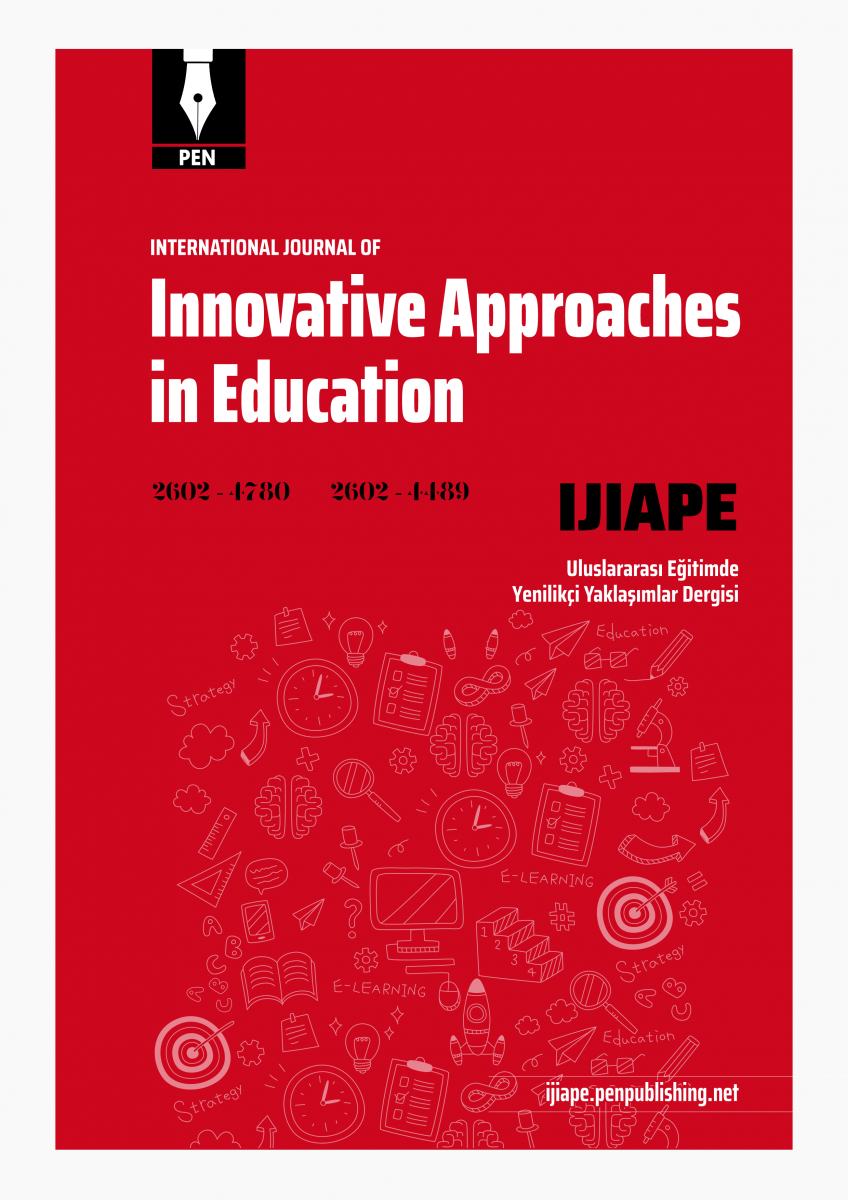- ACARA, (2018). Australian Curriculum, Assesment and Reporting Authority. http://australiancurriculum.edu.au/f-10-curriculum/technologies/digital-technologies/ adresinden 20.10.2018 tarihinde indirilmiştir. [Google Scholar]
- Computing at school, (2013). Computing at school in UK. https://www.microsoft.com/enus/research/wp-content/uploads/2016/07/ComputingAtSchoolCACM.pdf adresinden 22.10.2018 tarihinde indirilmiştir. [Google Scholar]
- CSER, (2017). Computer Science Education Research (CSER) Group, The University of Adelaide.http://www.digitaltechnologieshub.edu.au/docs/default-source/default-document-library/esadeliverableassessmentreviewofliterature_publish.pdf?sfvrsn=0 adresinden 21.10.2018 tarihinde indirilmiştir. [Google Scholar]
- Bocconi, S., Chioccariello, A., Dettori, G., Ferrari, A., & Engelhardt, K. (2016). Developing [Google Scholar]
- Computational Thinking in Compulsory Education. JRC Science for Policy Report. https://ec.europa.eu/jrc/en/publication/eur-scientific-and-technical-research-reports/developing-computational-thinking-compulsory-education-implications-policy-and-practice adresinden 20.10.2018 tarihinde indirilmiştir. [Google Scholar]
- CSTA & ACM, (2008). Ensuring Exemplary Teaching in an Essential Discipline: Addressing the Crisis in Computer Science Teacher Certification Final Report of the CSTA Teacher Certification Task Force. [Google Scholar]
- Demirel, Ö. (2000). Karşılaştırmalı Eğitim. (1. Baskı). Ankara: Pegem AkademikYayıncılık. [Google Scholar]
- Department for Education. (2013). The national curriculum in England: framework document England: Crown. https://www.gov.uk/government/publications/national-curriculum-in-england-computing-programmes-of-study adresinden 19.09.2018 tarihinde indirilmiştir. [Google Scholar]
- Department for Education, (2014a). National curriculum and assessment from September 2014: Information for schools. https://assets.publishing.service.gov.uk/government/uploads/system/uploads/attachment_data/file/358070/NC_assessment_quals_factsheet_Sept_update.pdf adresinden 15.09.2018 tarihinde indirilmiştir. [Google Scholar]
- Department for Education, (2014b). Assesment Principles. https://assets.publishing.service.gov.uk/government/uploads/system/uploads/attachment_data/file/304602/Assessment_Principles.pdf adresinden 18.10.2018 tarihinde indirilmiştir. [Google Scholar]
- Department for Education, (2015). Computer science GCSE subject content. https://www.gov.uk/government/uploads/system/uploads/attachment_data/file/397550/GCSE_subject_content_for_computer_science.pdf adresinden 01.05.2016 tarihinde edinilmiştir. [Google Scholar]
- Department for Education, (2017). 2018 teacher assessment guidance: key stage 2. https://www.gov.uk/government/publications/2018-teacher-assessment-guidance-key-stage-2 adresinden 20.10.2018 tarihinde indirilmiştir. [Google Scholar]
- Digital Technologies Hub, (2018a). Australian Government Department of Education and Training. http://www.digitaltechnologieshub.edu.au/teachers/assessment adresinden 13.09.2018 tarihinde indirilmiştir. [Google Scholar]
- Digital Technologies Hub, (2018b). Scope and Sequence (F-10). http://www.digitaltechnologieshub.edu.au/teachers/scope-and-sequence/5-6/adresinden 12.09.2018 tarihinde indirilmiştir. [Google Scholar]
- Digital Technologies Hub, (2018c). Lesson ideas. http://www.digitaltechnologieshub.edu.au/teachers/lesson-ideas/elemental-learning-design. adresinden 12.09.2018 tarihinde indirilmiştir. [Google Scholar]
- Ericson, B. (2008). Ensuring Exemplary Teaching in an Essential Discipline. Addressing the Crisis in Computer Science Teacher Certification, ACM, New York, NY. [Google Scholar]
- Falkner, K., Vivian, R., Falkner, N. (2014). The Australian Digital Technologies Curriculum: Challenge and Opportunity. Proceedings of the Sixteenth Australasian Computing Education Conference Auckland, New Zealand https://www.gov.uk/national-curriculum adresinden 20.02.2018 tarihinde indirilmiştir. [Google Scholar]
- Heintz, F., Mannila,L., & Farnqvist, T. (2016). A Review of Models for Introducing Computational Thinking, Computer Science and Computing in K–12 Education. IEEE Frontiers in Education Conference (FIE). [Google Scholar]
- Karakuş, M., Çoşğun, Ü. Ç. & Lal, İ. (2015). Ortaokul bilişim teknolojileri ve yazılım dersi öğretim programının öğretmen görüşleri doğrultusunda incelenmesi. Electronic Turkish Studies, 10(11), 461-486. [Google Scholar]
- Kemp, (2014). Computing in the national curriculum. A guide for secondary teachers. Computing at School & Naace. http://www.computingatschool.org.uk/data/uploads/cas_secondary.pdf adresinden 20.08.2018 tarihinde indirilmiştir. [Google Scholar]
- Krathwohl, D. R. (2002). A Revision of Bloom’s Taxonomy: An Overview. Theory into Practice, Volume 41, Number 4. https://www.depauw.edu/files/resources/krathwohl.pdf adresinden 16.08.2018 tarihinde indirilmiştir. [Google Scholar]
- Milli Eğitim Bakanlığı, (MEB). (2018). Bilişim Teknolojileri ve Yazılım Dersi Öğretim Programı (Ortaokul 5 ve 6. Sınıflar). http://mufredat.meb.gov.tr/Dosyalar/2018124103559587Bili%C5%9Fim%20Teknolojileri%20ve%20Yaz%C4%B1l%C4%B1m%205-6.%20S%C4%B1n%C4%B1flar.pdf adresinden 15.08.2018 tarihinde indirilmiştir. [Google Scholar]
- Milli Eğitim Bakanlığı (MEB). (2011). Bilişim Teknolojileri, Kodlamaya Hazırlık. http://www.selcuk.edu.tr/dosyalar/files/074/1%20C%23%20KODLAMAYA%20HAZIRLIK.pdf adresinden 12.08.2018 tarihinde indirilmiştir. [Google Scholar]
- OCR, (2018) Oxford Cambridge and RSA. https://www.tes.com/teaching-resource/computing-planning-for-2014-national-curriculum-6432313 adresinden 20.08.2018 tarihinde indirilmiştir. [Google Scholar]
- OECD, (2015). Students, Computers and Learning: Making the Connection. OISA, OECD Publishing. https://read.oecd-ilibrary.org/education/students-computers-and learning_ 9789264 239555-en#page3 adresinden 20.10.2018 tarihinde indirilmiştir. [Google Scholar]
- PISA ULUSAL RAPORU, (2015). M.E.B. Ölçme Değerlendirme ve Sınav Hizmetleri Genel Müdürlüğü. [Google Scholar]
- Romero, M., Lepage, A., & Lille, B. (2017). Computational thinking development through creative programming in higher education. International Journal of Educational Technology in Higher Education, 14:42. [Google Scholar]
- The Royal Society, (2012). The Royal Academy of Engineering. Shut down or restart? The way forward for computing in UK schools. https://royalsociety.org/~/media/education/computing-in-schools/2012-01-12-computing-in-schools.pdf adresinden 11.08.2018 tarihinde indirilmiştir. [Google Scholar]
- The Royal Society, (2017). After the reboot: computing education in UK schools. https://royalsociety.org/~/media/policy/projects/computing-education/computing-education-report.pdf adresinden 17.08.2018 tarihinde indirilmiştir. [Google Scholar]
- Sanford, J. F. (2013). Core concepts of computational thinking. International Journal of Teaching and Case Studies, 4(1), 1-12 [Google Scholar]
- School Curriculum and Standards Authority, (2017). Digital Technologies Curriculum – Pre-Primary to Year 10. https://k10outline.scsa.wa.edu.au/__data/assets/pdf_file/0005/364550/Digital-Technologies-Curriculum-Pre-primary-to-Year-10.PDF adresinden 20.10.2018 tarihinde indirilmiştir. [Google Scholar]
- Sentance, S., & Csizmadia, A. (2017). Computing in the curriculum: Challenges and strategies from a teacher’s perspective. Educ Inf Technol. 22:469–495 [Google Scholar]
- Thomson, S. (2015). Australian Students in a Digital World. Australian Council for Educational Research. [Google Scholar]
- Türkoğlu, A. (1998). Karşılaştırmalı Eğitim Dünya Ülkelerinden Örnekler. Adana: Baki Kitabevi [Google Scholar]
- Yadav, A., Gretter, S. Hambrush, S. & Sands, P. (2016). Expanding computer science education in schools: understanding teacher experiences and challenges. Journal Computer Scirnce Education. Volume:26 [Google Scholar]
- Yıldırım ve Şimşek, (2008). Sosyal bilimlerde nitel araştırma yöntemleri. Ankara: Seçkin Yayıncılık. [Google Scholar]
- Uzgur, B. Ç., & Aykaç, N. (2016). Bilişim teknolojileri ve yazılım dersi öğretim programının öğretmen görüşlerine göre değerlendirilmesi (Ege bölgesi örneği). Mustafa Kemal Üniversitesi Sosyal Bilimler Enstitüsü Dergisi, 13(34). [Google Scholar]
- Webb, M., Davis, N., Bell, T., Katz, Y.J., Reynolds, N., Chambers, D.P, Sysło, M.M. (2017). Computer science in K-12 school curricula of the 2lst century: Why, what and when? Educ Inf Technol, 22: 445–468 [Google Scholar]
- Wing, J. M. (2011). Research Notebook: Computational Thinking-What and Why? The Link.QCAA,(2018a). Queensland Curriculum Assesment Authority. https://www.qcaa.qld.edu.au/p-10/aciq/p-10-technologies adresinden 20.10.2018 tarihinde indirilmiştir. [Google Scholar]
- Weintrop, D., Holbert,N., Horn, S.M., & Wilensky,U. (2016). Computational Thinking in Constructionist Video Games. International Journal of Game-Based Learning. Volume 6, Issue 1. [Google Scholar]
|

